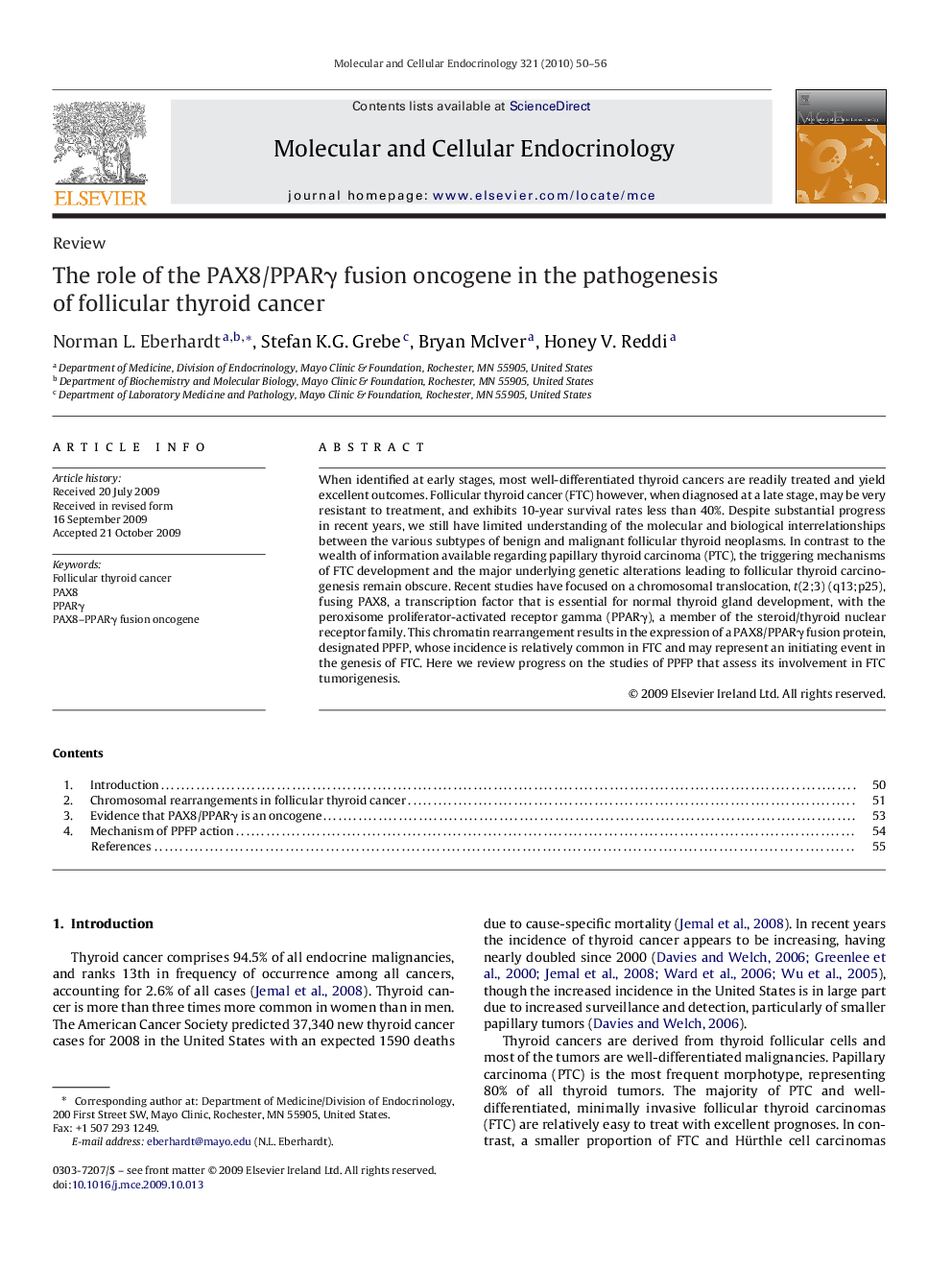| Article ID | Journal | Published Year | Pages | File Type |
|---|---|---|---|---|
| 2196927 | Molecular and Cellular Endocrinology | 2010 | 7 Pages |
When identified at early stages, most well-differentiated thyroid cancers are readily treated and yield excellent outcomes. Follicular thyroid cancer (FTC) however, when diagnosed at a late stage, may be very resistant to treatment, and exhibits 10-year survival rates less than 40%. Despite substantial progress in recent years, we still have limited understanding of the molecular and biological interrelationships between the various subtypes of benign and malignant follicular thyroid neoplasms. In contrast to the wealth of information available regarding papillary thyroid carcinoma (PTC), the triggering mechanisms of FTC development and the major underlying genetic alterations leading to follicular thyroid carcinogenesis remain obscure. Recent studies have focused on a chromosomal translocation, t(2;3) (q13;p25), fusing PAX8, a transcription factor that is essential for normal thyroid gland development, with the peroxisome proliferator-activated receptor gamma (PPARγ), a member of the steroid/thyroid nuclear receptor family. This chromatin rearrangement results in the expression of a PAX8/PPARγ fusion protein, designated PPFP, whose incidence is relatively common in FTC and may represent an initiating event in the genesis of FTC. Here we review progress on the studies of PPFP that assess its involvement in FTC tumorigenesis.
